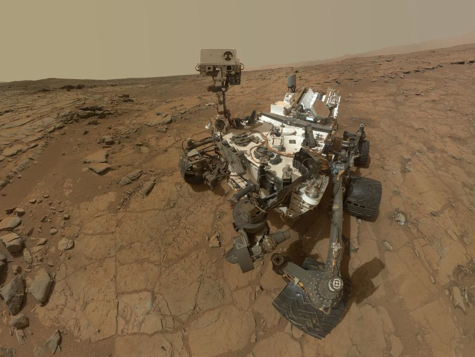In the alternate universe where I pursued a STEM-centric career instead of banging my head against the entertainment business, I would absolutely have been an engineer. I love the problem-solving physicality of it, and the struggle between what has to be accomplished and the constraints any solution must fit within; my fascination with aerospace is due in large part to my love of watching very smart people tinker their way through comically difficult problems. Whenever I hear that some new discovery has been made in the investigation of our solar system, my first reaction is to wonder, “Yes, but how?”
Such questions of logistics were foremost on my mind as I read the latest news from the Mars Science Laboratory Curiosity rover last week, about which there’s been a great deal of internet excitement. But for the sake of clarity and completeness, I’ll outline the basics of that news first before diving into my own investigation of a rock sample’s path through a robot laboratory.
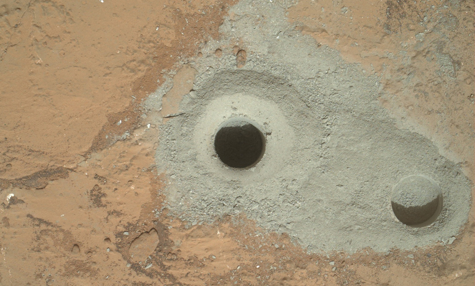
Back in early February, Curiosity drilled into Mars and collected our first-ever sample from inside a rock on another planet. Although everything moves slowly when you’re guiding a sophisticated machine from millions of miles away with a minutes-long communication delay, this analysis was further complicated by a week of computer memory problems that began right after the samples had been poured into the SAM and CheMin instruments. A month of careful progress and frustrating setbacks had passed before the Curiosity team announced their findings: that the ancient Martian riverbed which the rover is currently studying was once habitable to microbial life.
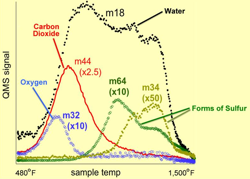
Unlike similar sedimentary deposits studied by the Opportunity rover in 2004, which we believe were formed by water that was both too acidic and too salty to make a good home for microorganisms, the powdered rock analyzed by Curiosity suggested a much more pleasant environment. The rock is a fine-grained mudstone, the structure of which evidences a history of moisture—clay minerals, formed when fresh water and igneous minerals react with one another, make up at least 20 percent of the new sample. Veins of calcium sulfate suggest neutral or mildly alkaline soil, and the gradient of oxidation (oxidation being the process that makes Mars red to begin with) evidences an environment similar to microbe-friendly places on Earth.
As a fan of Kim Stanley Robinson’s Mars trilogy, which was written in the early to mid-90s, it’s oddly heartening to learn that the reality of Mars is less inhospitable to life than what was described in a hopeful story of its colonization. But how exactly were these revelatory samples gathered? How does the MSL physically process them in such low gravity (3/8 of Earth’s) without clogging up its works? And how do the two instruments that enabled these new discoveries—SAM (Sample Analysis at Mars) and CheMin (Chemistry & Mineralogy)—actually work?
In this particular case, the process of collecting a sample began with checking to make certain the drill and the robotic arm it’s mounted on would work as expected. Several “pre-load” tests, in which the drill bit was pressed against the Martian bedrock without actually rotating, helped engineers check that the hardware was reacting to the stresses involved as they expected it would. They left the arm in this position over one Martian night, as the extreme temperature changes (from 0º to −65º C) involved cause the rover’s arm and chassis to grow and shrink by about a tenth of an inch, and the engineers wanted to be safe in case there’s ever cause to pause overnight midway through drilling. Finally a “drill-on-rock checkout” and “mini-drill” demonstrated that the percussive and drilling actions were both behaving as expected in the field, hammering the rock and then drilling small amounts of powder which the team on Earth could visually check.
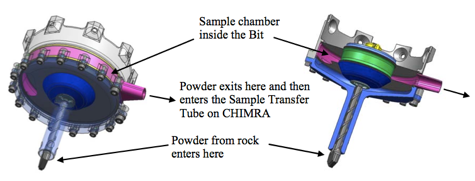
When the actual, we’re-collecting-a-sample-now drilling and percussive powdering took place on February 8th, the pulverized rock was carried up into the “turret” of the robotic arm via channels along the sides of the auger-style drill bit. The sample was then transferred into the CHIMRA (Collection and Handling for In situ Martian Rock Analysis) system, which sifts the powder through a series of sieves and portions it into units for the different instruments to digest. A process which sounds straightforward until you remember the problems I mentioned above—low gravity, total isolation, and a whole host of unknowns that mean the design for these systems has to be as robust and straightforward as possible.
To keep things simple and minimize the number of moving parts (particularly those that come in direct contact with passage-clogging dust and grit) Curiosity moves samples through the CHIMRA system by physically rotating the entire turret. Much like one of those plastic cube puzzles where you guide a ball-bearing through a three-dimensional maze, the powdered rock is moved through a labyrinth of sieves and storage chambers with gravity, helped along by gentle vibration from special motors in the turret. (The original design documents also outline Primary and Secondary Thwack Mechanisms, which used spring-mounted “thwackers” to dislodge stray particles, but I can’t tell if those systems made it onto the final MSL. I’ll admit I hope they did, mostly because I find the idea of a Primary Thwack Mechanism to be hilarious.)
Once the CHIMRA had finished with them, the sifted portions of powdered rock were poured into the little grill-covered inlets for the SAM and CheMin instruments—again, for simplicity’s sake, this involved physically moving the entire turret into position above the ports on top of the MSL’s deck—and somewhere around the unfortunately-timed computer problems, the composition of the rock was analyzed by the little robotic laboratories.
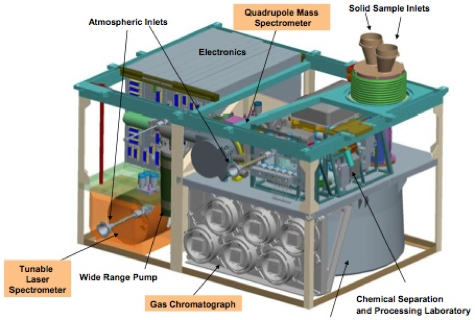
SAM is actually a suite of instruments for processing both solid samples of rock and breaths of Martian atmosphere. When the parcel of powdered bedrock was poured into SAM’s inlet, it was delivered into one of SAM’s 59 quartz sample cups, which had been previously baked to cleanliness in a pyrolysis oven. The rock was then heated to about 1000º C, and the gasses that were released (or “evolved”) were monitored by a Quadruple Mass Spectrometer and a Tunable Laser Spectrometer—the former of which detects and quantifies different gasses, while the latter is targeted at more precisely at measuring methane, water, carbon dioxide and a variety of isotopes. Part of the evolved gas is trapped, stored for a while and then redirected into a Gas Chromatograph, which separates out different components along a column within the instrument so they can be studied by the Mass Spectrometer one at a time. The data SAM provided is why, for instance, we know about the gradient in oxidization I mentioned earlier.
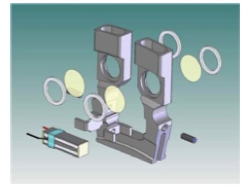
CheMin’s method of analysis is more straightforward—it directs a focused beam of x-rays through a sample and measures how the beam is refracted—but the details of how it manages this in an automated fashion have an almost whimsical feel to them. Once the powdered rock has been poured into the instrument, it’s funneled through a mesh screen and into one cell of a rotating sample wheel, turned so that it stands on one side like a ferris wheel. Each cell functions almost like a slide, with a flat compartment fitted with twin circular mylar or Kapton windows that sandwich a thin layer of powder between them.
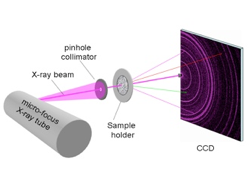
The sample is then vibrated as a hairsbreadth x-ray beam shines through it and onto a CCD sensor that’s mounted on the opposite side of CheMin’s interior. The crystalline structures in the rock dust diffracts the beam in predictable ways, and over time enough of the sample will pass through the beam and send photons winging into a certain parts of the CCD to form a pattern of rings, the placement and intensity of which indicate the composition of the sample.
Even to a layman such as myself, it’s clear from the documents and diagrams available that some serious technical challenges were overcome to build such a compact, sophisticated suite of instruments, particularly with this degree of automation, fault-tolerance and reliability. When I was reading up on Gas chromatography, I ran into a quote on the Wikipedia page that struck me as pretty apt:
…Most GC analyses are not push-button operations. You cannot simply drop a sample vial into an auto-sampler’s tray, push a button and have a computer tell you everything you need to know about the sample. The operating program must be carefully chosen according to the expected sample composition.
I’m sure the same goes for every other component in Curiosity’s suite of instruments. And yet, in many ways, a “push button” operation was exactly the thing that NASA’s engineers needed to design—a highly-automated machine that could do real science without a technician hovering over it, specialized enough to collect meaningful data while still maintaining the flexibility needed to manage whatever unexpected curve balls the Martian landscape might throw.
Of course, the processes I’ve talked about in this post are only a small cross-section of what Curiosity’s equipped to do. As further secrets of Martian geological history are revealed, I’ll be sure to delve into the rest of the MSL suite and how it carries out its work.
~~~
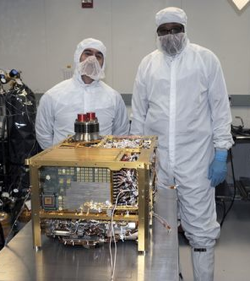 Side Note One: The drill on Curiosity’s turret is actually called the PADS—Powder Acquisition Drill System. But most of the NASA documents don’t even call it that, so it seemed kind of silly to do so here.
Side Note One: The drill on Curiosity’s turret is actually called the PADS—Powder Acquisition Drill System. But most of the NASA documents don’t even call it that, so it seemed kind of silly to do so here.
Side Note Two: The CHIMRA is one of those systems where the merciless constraints of durability, weight and real estate keep engineers up at night—originally designed to have a 20:1 ratio between the size of a given chamber and the size of the particles that would be passing through it, that allowance was later reduced to only 10:1, still roomy but much less comfortably so. Honestly, I could go on and on about preferred sorting direction and the dangers of non-spherical particles, but for the sake of this post ever getting finished I’ll just say you should read the CHIMRA pdf I’ve linked to below if any of that sounds interesting.
Side Note Three: There are a variety of controls included on Curiosity that let the ground team check for contamination or instrument error—cells on the CheMin wheel permanently loaded with calibration standards; vacuum-sealed chambers of “organic check material” on the deck of the rover which can be drilled into and analyzed. There are two spare drill bits mounted to the front of the rover, in case of unexpected wear-and-tear or the near-disaster of a bit getting stuck midway through drilling.
Side Note Four: It’s worth googling any number of the components included on the MSL, just to see how insanely miniaturized they are compared to what you’d find in an average laboratory on Earth.
~~~
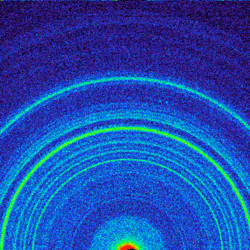
Sources and Further Reading
NASA Mission News:
Rover Finds Conditions Once Suited for Ancient Life on Mars
Curiosity Rover’s Recovery on Track
Lab Instruments Inside Curiosity Eat Mars Rock Powder
Rover Confirms First Drilled Mars Rock Sample
Curiosity Collects First Martian Bedrock Sample
Two Different Aqueous Environments @ NASA
Major gases analyzed by SAM @ NASA
X-ray Diffraction Patterns @ NASA
MSL Chemistry & Mineralogy @ JPL
MSL Sample Analysis at Mars @ JPL
MSL CHIMRA design doc @ NTRS (PDF)
MSL Sample Acquisition, Processing and Handling @ NTRS (PDF)
Alison Wilgus spends most of her time making comics and the rest of it thinking about space. Recently she’s written a SF novella about Mars and drawn an interactive webcomic about a cat, firmly planting her flags at either end of the nerd spectrum.










